How Does A Diesel Driven Air Compressor Work?
Diesel driven air compressors can be complex systems, with numerous components, but every air compressor has two core components:
- Air end
- Diesel engine
The air end is the “heart” of the air compressor. It is the part of the air compressor that compresses the air, drawing air from the atmosphere and then forcing it into a much smaller space. In rotary screw air compressors, the air end is comprised of the rotors and rotor housing. In reciprocating air compressors, the air end contains the pistons.
But the air end needs a power source to operate, which is where the diesel engine comes in. A diesel driven engine converts diesel fuel into motion, forcing the air end to move and the system to compress air.
VMAC’s diesel driven air compressor looks like this:
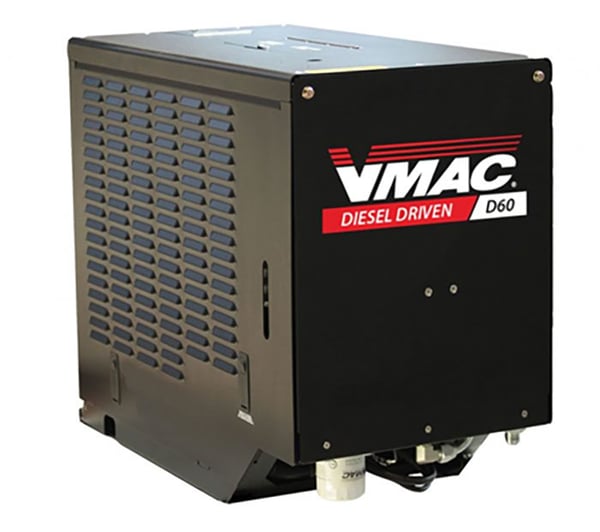
From the outside, the system seems sleek and simple. It’s essentially a black box with some venting and an oil filter sticking out. But on the inside, there is a lot more going on:
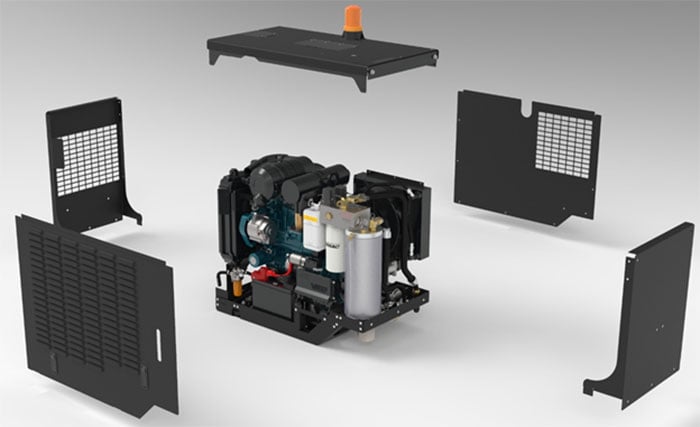
By taking this system apart and looking at the components individually, we can get an even better understanding of what is happening inside the diesel driven air compressor.
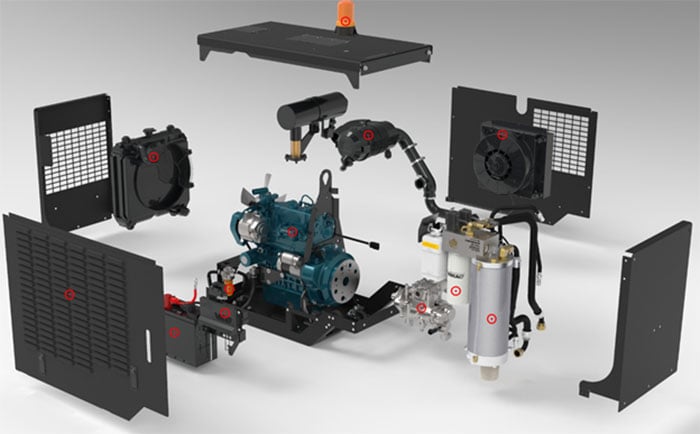
Each of these components plays an important role within the diesel driven air compressor and together, they allow the system to compress air. From left to right, the identified components are:
| Component | Purpose |
|---|---|
| Service Panel | Protects air compressor system from elements and contamination; allows access for servicing. |
| Engine Radiator | Cools heat generated by the system |
| Battery | Provides power to the diesel engine |
| Control Panel | Controls the system operation and stored settings |
| Fuel Filter | Filters contaminants in the diesel fuel |
| Kubota Diesel D902 Engine | Rotates the air end and transfers energy from the battery to the air compressor system |
| Engine & Compressor Air Filter | Filters contaminants in the air |
| VMAC Air End | Compresses air |
| Coalescing Filter | Removes water and oil aerosols from compressed air |
| Air/Oil Separator Tank | Removes oil from compressed air, ensuring the oil recirculates within the system |
| Compressor Oil Cooler | Maintains optimal compressor oil temperatures |
How Does A Small Diesel Engine Work?
Diesel engines use combustion to ignite fuel and generate energy. Hot, compressed air and diesel fuel are mixed in a combustion chamber, and the reaction between the air and fuel causes an explosion.
Here is a breakdown of what happens when you turn on a small diesel engine:
The Engine Heats Up
When you turn on the engine, the battery powers the pistons in the cylinder up and down. The pistons push the air through the cylinders, into a combustion chamber where it is compressed. Compression forces the molecules in the air to move faster, which naturally heats the air. Fuel is then injected into the hot, compressed air, and ignites. This process is repeated continuously until the engine is powered off.
If the temperature of the engine is too cold, a glow plug may be used to help the air meet the required temperature to ignite. Glow plugs heat the air within the cylinder during the first few seconds the engine is turned on. After the fuel first ignites, the glow plug turns off.
Fuel Is Pumped To The Cylinders
While the above process occurs, additional fuel is delivered by the system. The fuel is pumped from the fuel tank, passing through filters, a higher pressurization pump, and a delivery tube (called a fuel rail) along the way. The pressurized fuel then reaches the fuel injectors, which deliver fuel to the cylinders.
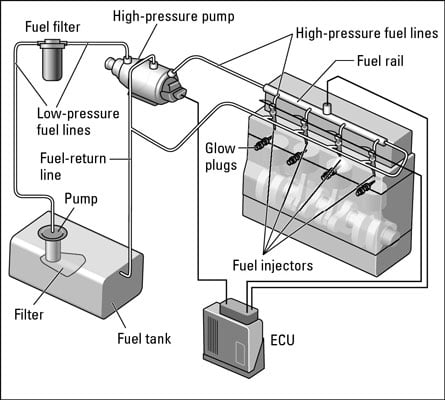
(A Rail Fuel Injection System, Source: Dummies.com)
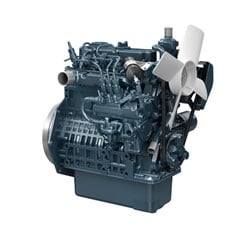
Air Is Pumped To The Cylinders
During the ignition process, air is also pumped to the cylinders. On some engines, this air passes through a simple air cleaner en route to the cylinders. In others, a turbocharger is used to increase the amount of compressed air in the cylinders, resulting in better fuel economy and power. In either scenario, the air travels through an intake valve and is delivered to the cylinders.
Want to learn more about air compressors? Check out our Guide To Rotary Screw Air Compressors!
